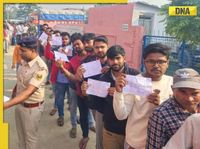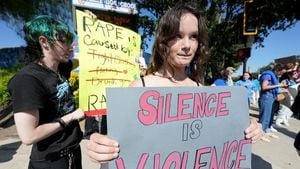On November 11, 2025, two major stories gripped India’s attention: a shocking security incident in the capital and the dramatic conclusion of a high-stakes election in Bihar. Both events, though vastly different in nature, unfolded almost simultaneously and sent ripples across the nation, shaping the headlines and the public mood in unexpected ways.
In Delhi, the historic Red Fort—one of India’s most iconic monuments—was abruptly closed to the public for three days following a blast. According to Times Now, authorities wasted no time in tightening security. The Lal Quila Metro station and the bustling Chandni Chowk area were also shut down, while traffic curbs rippled across the city, causing headaches for commuters and tourists alike. The closure was not just a precaution; it was a direct response to what officials described as a serious security breach. Investigators were further rattled when a significant arms haul in Faridabad was linked to the ongoing blast probe, deepening concerns about the scale and intent behind the attack.
The Red Fort, a UNESCO World Heritage Site, has long stood as a symbol of India’s sovereignty and resilience. Its sudden closure sent a strong message: the authorities were not taking any chances. For residents and visitors, the sight of barricades and police cordons around such a beloved landmark was both unsettling and surreal. Meanwhile, the closure of the Lal Quila Metro and the adjacent Chandni Chowk—a commercial and cultural hub—brought parts of Old Delhi to a virtual standstill. With traffic diversions and heightened checks, the city’s rhythm was unmistakably disrupted.
While Delhi reeled from the aftershocks of the blast and its security fallout, all eyes in the political world were fixed on Bihar, where the 2025 Assembly Elections had just concluded their second and final phase. The numbers coming in were historic. As Times Now reported, Bihar recorded its highest-ever voter turnout: 65.08% in the first phase on November 6, and an unprecedented 67.14% in the second phase on November 11. The surge in participation reflected both the stakes involved and the growing engagement of the electorate in one of India’s most politically vibrant states.
But what did the voters decide? Multiple exit polls, released on the evening of November 11, painted a clear—if still provisional—picture. The BJP-led National Democratic Alliance (NDA) appeared poised for a commanding victory, with projections consistently showing the coalition comfortably surpassing the halfway mark in the 243-seat Bihar Assembly. The Mahagathbandhan (MGB), led by Tejashwi Yadav, was predicted to fall well short, while Prashant Kishor’s much-discussed Jan Suraaj Party (JSP) seemed to have made little electoral impact.
Let’s break down the seat projections, as reported by Times Now:
The JVC Exit Poll gave the NDA between 135 and 150 seats, the MGB 88 to 103, JSP 0 to 1, and Others 3 to 6. Matrize Exit Poll was even more bullish on the NDA, projecting 147 to 167 seats, with the MGB at 70 to 90, JSP at 0 to 2, and Others 2 to 8. P-Marq’s survey forecasted 142 to 162 for the NDA, 80 to 98 for the MGB, 1 to 4 for JSP, and 0 to 3 for Others. Chanakya Strategies offered a slightly more modest estimate: NDA 130 to 138, MGB 100 to 108, and Others 3 to 5, with JSP not making the cut. Dainik Bhaskar’s poll rounded out the consensus, predicting 145 to 160 seats for the NDA, 73 to 91 for the MGB, JSP 0 to 3, and Others 5 to 7.
With the halfway mark set at 122, these numbers suggested that the NDA’s victory was not just likely, but inevitable—at least according to the exit polls. The official counting of votes was scheduled for November 14, leaving parties and pundits alike in a state of anxious anticipation. As Times Now reminded readers, exit polls are, after all, projections based on sample voter responses, and the final results could still hold surprises once every ballot is tallied.
For Chief Minister Nitish Kumar, the 2025 election was more than just another contest—it was widely seen as a referendum on his long tenure. After years at the helm, Kumar’s leadership faced scrutiny from all sides, with critics arguing that his government had failed to deliver on key promises, and supporters touting his record on development and stability. The exit polls, however, suggested that the electorate was leaning decisively in his favor, handing the NDA a mandate that would be hard to ignore.
Meanwhile, the Mahagathbandhan, a coalition of opposition parties united under Tejashwi Yadav, found itself staring at a disappointing outcome. Despite energetic campaigning and efforts to galvanize younger voters, the alliance seemed unable to break the NDA’s hold on the electorate. The JSP, led by political strategist Prashant Kishor, had entered the fray with considerable fanfare and a promise to shake up Bihar’s entrenched political order. Yet, as the numbers showed, translating a three-year campaign into actual votes proved a far tougher challenge than anticipated.
In the midst of this electoral drama, the security situation in Delhi remained tense. The blast at the Red Fort and the subsequent arms discovery in Faridabad raised uncomfortable questions about the city’s vulnerability and the potential for further incidents. Authorities detained six individuals and questioned over fifty in connection with the probe, as reported by Times Now. The link to a suspected terror module only heightened anxieties, prompting calls for greater vigilance and coordination among law enforcement agencies.
For Delhiites, the incident was a stark reminder that even as the country celebrated the vibrancy of its democracy, security threats remained all too real. The closure of the Red Fort—normally a site of celebration and national pride—served as a potent symbol of the challenges India continues to face, both from within and beyond its borders.
As the nation awaited the official Bihar election results and watched developments in Delhi unfold, one thing was clear: November 11, 2025, would be remembered as a day of both democratic triumph and sobering uncertainty. The coming days would reveal whether the exit poll projections held true and how the capital would move forward from the shock of the Red Fort blast. For now, India found itself at a crossroads—grappling with the promise of political renewal and the persistent shadow of security threats, all within the span of a single, unforgettable day.




